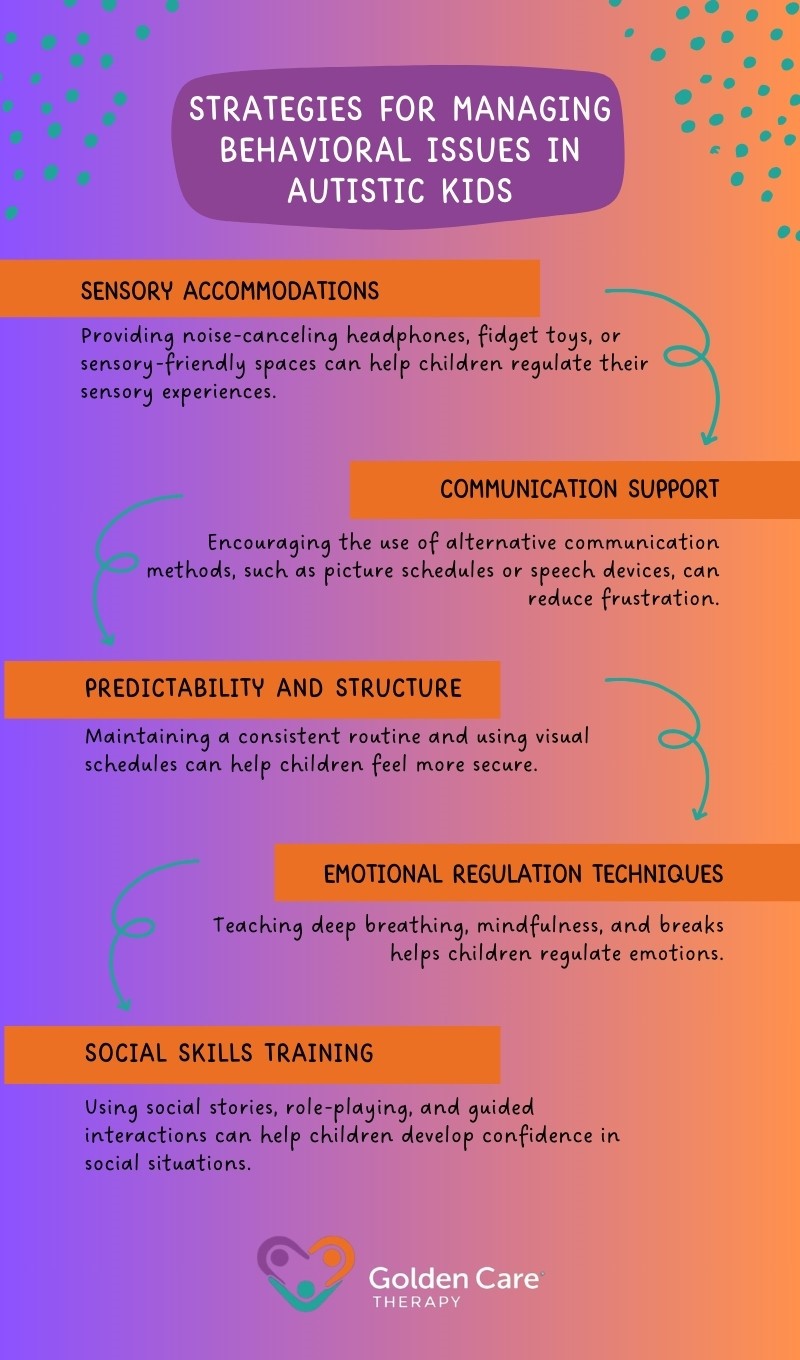Children with autism often experience behavioral challenges that can make daily life difficult for them and their families. These behaviors are not random but are influenced by a variety of factors, including sensory sensitivities, communication difficulties, emotional regulation struggles, and environmental triggers.
Understanding these influences can help parents, caregivers, and educators provide better support and develop strategies that reduce distress and improve quality of life.
Sensory Sensitivities and Overstimulation
One of the most significant influences on behavioral issues in children with autism is sensory sensitivity.
Many autistic children experience hypersensitivity or hyposensitivity to certain stimuli, meaning they may be overwhelmed by sounds, lights, textures, or even smells that others barely notice.
A sudden loud noise, bright fluorescent lighting, or an unexpected touch can trigger extreme distress, leading to behaviors such as meltdowns, aggression, or self-injury.
For example, a child who is hypersensitive to sound may become agitated and cover their ears in a noisy environment like a shopping mall. If they are unable to escape the overwhelming situation, they may lash out or have a meltdown.
On the other hand, some children are hyposensitive, meaning they may seek sensory input by engaging in repetitive movements like spinning, hand-flapping, or crashing into objects.
Unmet sensory needs can lead to frustration that manifests as challenging behavior.

Communication Difficulties
Communication barriers play a major role in behavioral challenges for children with autism. Many struggle with verbal communication, making it difficult for them to express their needs, wants, or feelings.
Once they can’t effectively communicate, frustration can escalate into behaviors such as crying, hitting, or throwing objects.
Some children with autism are nonverbal and may use alternative methods of communication, such as sign language, picture exchange communication systems (PECS), or communication devices. However, if they lack access to these tools or if those around them do not understand their communication attempts, it can lead to intense frustration and behavioral outbursts.
Even verbal children with autism may struggle with expressive and receptive language. They may not always understand social cues, idioms, or indirect instructions, which can cause confusion and lead to reactions that seem inappropriate or aggressive.
Teaching alternative communication strategies and being patient with their attempts to express themselves can help reduce behavioral incidents.
Emotional Regulation Challenges
Emotional regulation is another critical factor that influences behavioral issues in autistic children. Many struggle with managing their emotions, making it harder for them to cope with frustration, anxiety, or unexpected changes.
They may experience intense emotions but lack the skills to self-soothe or regulate their reactions effectively.
For example, a small change in routine might trigger intense anxiety, leading to a meltdown. These reactions are often not about defiance or misbehavior but rather an inability to process emotions in a way that feels manageable.
Teaching children self-regulation techniques, such as deep breathing, sensory breaks, or using a calm-down area, can help them develop better coping mechanisms. Predictability and structured routines can also provide a sense of security, reducing anxiety and preventing behavioral escalations.
Difficulty with Social Interactions
Social difficulties can also contribute to behavioral issues in children with autism. Many struggle with understanding social norms, reading body language, or interpreting facial expressions.
This can make social situations overwhelming and confusing, leading to withdrawal or frustration-driven behaviors.
For example, a child may want to join a group of peers playing a game but may not know how to initiate interaction. If they are ignored or misunderstood, they might become upset and react aggressively or withdraw completely. Teaching social skills explicitly, using social stories, role-playing, and visual supports can help autistic children navigate social interactions with greater confidence.
Anxiety and Stress
Anxiety is a common challenge for autistic children and can be a significant contributor to behavioral difficulties.
Many children with autism experience heightened levels of anxiety, which can stem from a variety of sources, such as unpredictable environments, sensory overload, difficulty understanding social expectations, or fear of making mistakes.
When anxiety becomes overwhelming, it may lead to avoidance behaviors, shutdowns, or meltdowns. Some children may engage in repetitive behaviors, such as pacing or rocking, as a way to self-soothe. Others may become aggressive when they feel trapped or unable to cope with their emotions.
Providing a predictable and structured environment, along with coping tools such as visual schedules, transition warnings, and relaxation techniques, can help reduce anxiety and its impact on behavior.
The Impact of Unmet Needs
Unmet physical, emotional, or psychological needs can also contribute to behavioral challenges. If a child is hungry, tired, in pain, or experiencing discomfort, they may not have the ability to express these needs verbally. Instead, their distress may show up as irritability, aggression, or self-injurious behaviors.
For example, a child who is in pain due to an ear infection may suddenly become more aggressive or resistant to tasks they usually tolerate.
Since they may not be able to articulate their discomfort, their behavior is their way of signaling distress. Caregivers should always consider medical and physiological factors when trying to understand sudden changes in behavior.
Environmental Triggers
Environmental factors, such as changes in routine, new social settings, or transitions between activities, can have a big impact on behavior. Autistic children often thrive on predictability and struggle with unexpected changes.
A change as simple as a substitute teacher at school or a rearrangement of furniture at home can trigger distress.
Unexpected transitions can be particularly difficult. Moving from one activity to another without warning can cause frustration and resistance. Using visual schedules, countdown timers, and clear explanations can help ease transitions and reduce behavioral disruptions.
Strategies for Support
To help manage and reduce behavioral challenges in autistic children, it is essential to understand the root causes of their distress. Rather than viewing behaviors as defiant or problematic, caregivers should approach them as forms of communication that reveal unmet needs or difficulties in processing their environment.
That said, here are some key strategies that could help:

Taking the time to understand what influences behavioral challenges in autistic children lets caregivers and educators create environments that reduce stress, support emotional growth, and help children develop the skills they need to navigate their world more comfortably.
Each child is unique, and by tailoring support to their specific needs, we can help them thrive and reach their full potential. At Golden Care Therapy, we provide high-quality ABA therapy with compassionate, experienced professionals dedicated to making a real difference. We proudly offer ABA services in Indiana, New Jersey, New York, Georgia, and Florida to help families access the support their children deserve. Reach out to us today to learn how we can support your child’s journey!
Sources:



